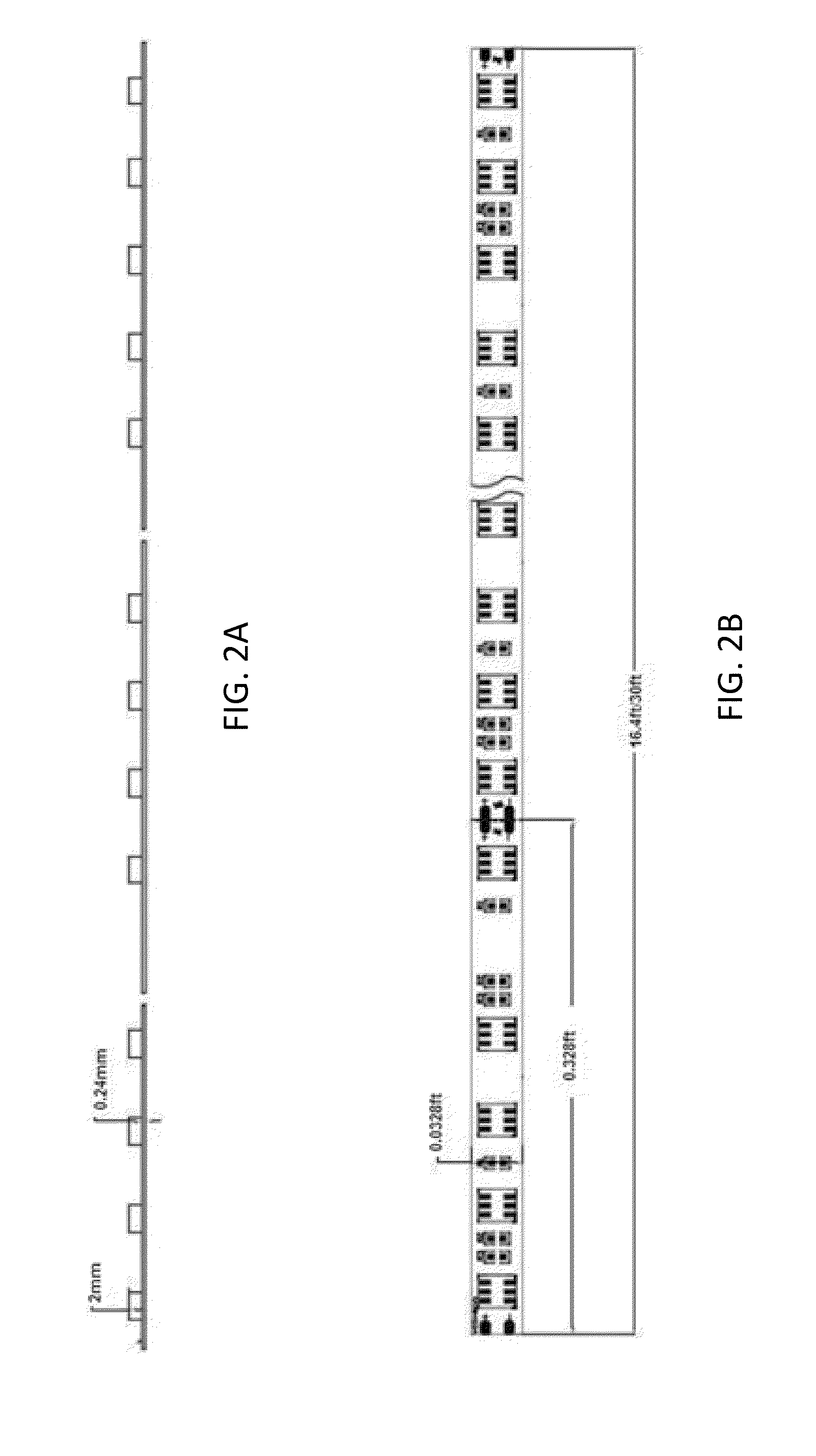Modular LED lighting systems, including flexible, rigid, and waterproof lighting strips and connectors
a module-type, led lighting technology, applied in the direction of lighting support devices, light source combinations, coupling device connections, etc., can solve the problems of difficult installation or repair of lighting, time-consuming, and huge conflicts, and achieve convenient interconnection, convenient repair, and adaptability.
- Summary
- Abstract
- Description
- Claims
- Application Information
AI Technical Summary
Benefits of technology
Problems solved by technology
Method used
Image
Examples
Embodiment Construction
[0143]Reference will now be made in detail to various exemplary embodiments of the invention. The following detailed description is presented for the purpose of describing certain embodiments in detail and is, thus, not to be considered as limiting the invention to the embodiments described. Additionally, any features of any embodiment described herein are equally applicable to any other embodiment described herein or envisioned by one of ordinary skill in the art. Thus, the detailed descriptions provided herein should not be construed to exclude features otherwise described with respect to another embodiment.
[0144]Particular embodiments according to the invention may include a modular lighting strip comprising: a non-conductive substrate strip comprising an electrical circuit; a plurality of light sources operably connected to the electrical circuit; a plug integrally formed at an end of the substrate strip; and a socket integrally formed at an opposing end of the substrate strip; ...
PUM
 Login to View More
Login to View More Abstract
Description
Claims
Application Information
 Login to View More
Login to View More - R&D
- Intellectual Property
- Life Sciences
- Materials
- Tech Scout
- Unparalleled Data Quality
- Higher Quality Content
- 60% Fewer Hallucinations
Browse by: Latest US Patents, China's latest patents, Technical Efficacy Thesaurus, Application Domain, Technology Topic, Popular Technical Reports.
© 2025 PatSnap. All rights reserved.Legal|Privacy policy|Modern Slavery Act Transparency Statement|Sitemap|About US| Contact US: help@patsnap.com



